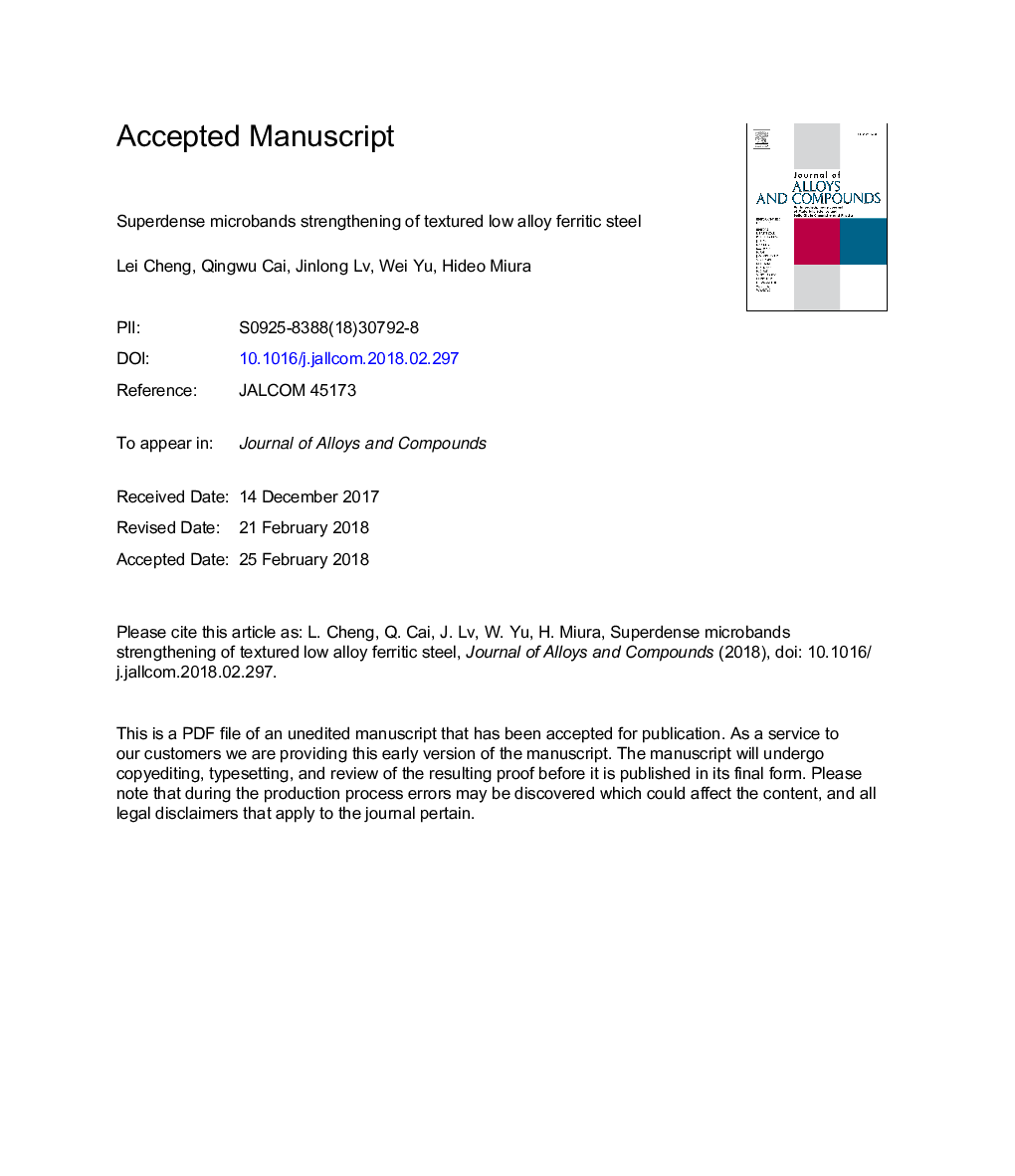| Article ID | Journal | Published Year | Pages | File Type |
|---|---|---|---|---|
| 7992715 | Journal of Alloys and Compounds | 2018 | 21 Pages |
Abstract
Microstructure evolution of Ti-Mo microalloyed ferritic steel was studied via warm rolling process. Results revealed that rolling at 500â¯Â°C (R3) mainly facilitated the formation of superdense microbands (â¼200â¯nm in spacing), especially in the γ textured region. Average spacing of microbands (MBs) increased with temperature and it turned to be about 850â¯nm when rolling at 650â¯Â°C (R2). As rolling temperature further increased to 700â¯Â°C (R1), average ferritic grain size was refined to near 1.9â¯Î¼m whereas no MBs appeared. Additionally, due to the preexisting superdense MBs, ultimate tensile stress of R3 increased to 1041â¯MPa and the elongation kept high at 22.9% simultaneously. MBs are characterized by high density dislocation walls and formed through the activation of {112}<111> slip systems, which is induced by the pile up of dislocations during grain boundary sliding. In that process steps appear in the grain boundary and gradually heighten with the extension of MBs. Large dynamic recovery rate could slack the dislocation pile up rate and increase the spacing of MBs. Moreover, preexisting of superdense MBs sheds new insights on the development of high strength ferritic steels with excellent combination of strength and ductility.
Related Topics
Physical Sciences and Engineering
Materials Science
Metals and Alloys
Authors
Lei Cheng, Qingwu Cai, Jinlong Lv, Wei Yu, Hideo Miura,
